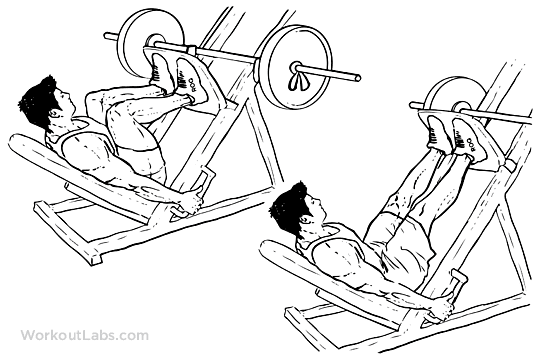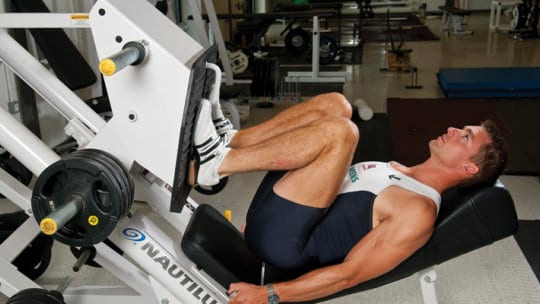Leg Press
An optimal training for the development of the legs must include different stimuli with targeted exercises. In fact, to increase mass, you must not limit yourself, as many do, to the Squat, but it is important to correctly integrate other exercises such as the Leg Press.
This exercise brings various benefits: it is useful for achieving thehypertrophy, and allows you to focus on weight shifting without paying too much attention to balance and coordination, which are fundamental for the squat.
Muscles involved
The Leg Press works all the muscles of the leg in an exceptional way: i quadriceps, the buttocks, the calves and hamstring muscles, that is, the muscles of the back of the thigh, which in turn are composed of hamstring, semitendinosus muscle e semimembranous muscle.
Furthermore, depending on the position of our feet on the platform of the machine, we can adjust the exercise by choosing the muscles we want to focus on.
The cars
For the Leg Press they exist 3 different machines:
1) Vertical Leg Press
In the Vertical Leg Press your back will be against the floor, with your legs raised in the air and your weight placed directly on the platform. It is also equipped with a safety lock that prevents the weight from falling on you.
2) Horizontal Leg Press
The Horizontal Leg Press is the most common of the three: also known as the Seated Leg Press, you will be sitting against a backrest and you will push the weight forward.
3) 45 Degree Leg Press
The platform is placed at 45 degrees with respect to the floor and is therefore a combination of the previous ones, since you will be seated, but you will still push upwards.
The effects on the muscles of these three different machines are the same, so you can choose the one you feel most comfortable with.
The Execution
Whatever type of machine you choose, in the classic exercise you will have to sit down and put your feet on the platform, in the center and at shoulder width, then lower it: you will not have to start the movement if in your starting position the torso and legs do not form a maximum angle 90 degrees, or if your knees are too close to your chest.
Stretching your legs and keeping your back straight, push with your heels on the footplate, avoiding fully extending your knees by locking them in place, as this could cause serious injury to the joint.

During this phase of the exercise i quadriceps and buttocks.
Then slowly return to the starting position, without letting the weights rest which must remain in suspension.
The tighter your muscle is during this phase, the more your muscles will work hamstring.
When you reach a high enough weight, you can do this exercise with one leg at a time on the platform.
variants
For some, the classic Leg Press is a sufficient and balanced training for the development of the leg, while others need an intensive training of specific muscles: in this case, by changing the position of the feet you can achieve a complete training for the lower limbs.
By changing the distance between the feet we can train the different sides of the leg: a wider position places a greater burden on adductors and the internal quadriceps, or theinner thigh; a tight stance develops moreouter thigh, i.e. the abductors and the external quadriceps.
If, on the other hand, we change the height of the feet on the platform, the rear or front muscles of the leg will be trained differently: if the feet are up, i will be trained buttocks he ischiocrurali; if the feet will be down, i will be emphasized quadriceps.
Calves
With care, the Leg Press can also be used to intensively train the calves, or more precisely the gastrocnemius, which is formed by medial twin, the inner part, e side twin, that is the external part.
Extending the legs almost completely, as if doing a simple repetition of the Leg Press, again without locking the knees, lean one at a time your toes on the lower edge of the platform, and then extend the ankles.

Here, too, the position of the feet influences a lot: pointing the toes beforei you get a balanced workout of the gastrocnemius, aiming towards the outside trains the medial twin and pointing towards the interior the side one.
Conclusion
The Leg Press is an excellent exercise for those who target the mass, and one of the simplest for the complete leg workout for beginners. Maybe an athlete who wants more strength may not be comfortable replacing the squat, but this does not mean that he cannot integrate it into his training, obtaining an ideal balance between mass and power.
Unfortunately, the Leg Press has, like any exercise, its flaws: an incorrect shape could cause a lot of stress to the knees and lower back, especially with heavy weights.
It is ideal to do stretching before each session to avoid any type of injury.
Good workout!
PS.
Do you want to know more about Leg training? Read here!


























